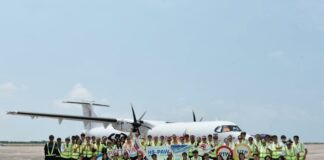Middle East airports have seen growth of 9.6 per cent, year-to-date (YTD), with expansion at the Dubai World Central and Hamad International Airport cancelling out the slowdown caused by runway closures at Dubai Airport, according to Airports Council International (ACI) figures.
In July, the Middle East was up 12 per cent year-on-year, making up for being 0.5 per cent and 3.9 per cent down in May and June, respectively, when Dubai Airport was operating one runway while refurbishments were carried out. In January, February, March and April the Middle East was up 3.7 per cent, 4.7 per cent, 4.3 per cent and 4.4 per cent, respectively. These figures represent international freight as no domestic figures were given.
Asia Pacific was up 5.1 per cent YTD in total, international freight was up 5.5 per cent YTD while domestic freight was up 3.9 per cent. International freight was up in January, February, March, April, May, June and July by 6.6 per cent, 1.4 per cent, 5.2 per cent, 5.7 per cent, 5.9 per cent, 4.9 per cent and 7.2 per cent, respectively.
Domestic was down 3.5 per cent in January, it was up 9.7 per cent, 5.1 per cent, 3.5 per cent, 4.7 per cent, 3.3 per cent and 5.4 per cent in February, March, April, May, June and July, respectively.
Narita International Airport saw a nine per cent increase in cargo throughput, the highest recorded, and it handled a total of 1.1 million tonnes.
The next biggest rise was Shanghai Pudong Airport, up 8.3 per cent, to 816,917 tonnes, followed by Hong Kong International Airport, handling 2.4 million tonnes and Incheon International Airport with 1.4 million tonnes between January and July. Dubai Airport remained in the top five despite dropping 3.1 per cent to 1.3 million tonnes in total.













